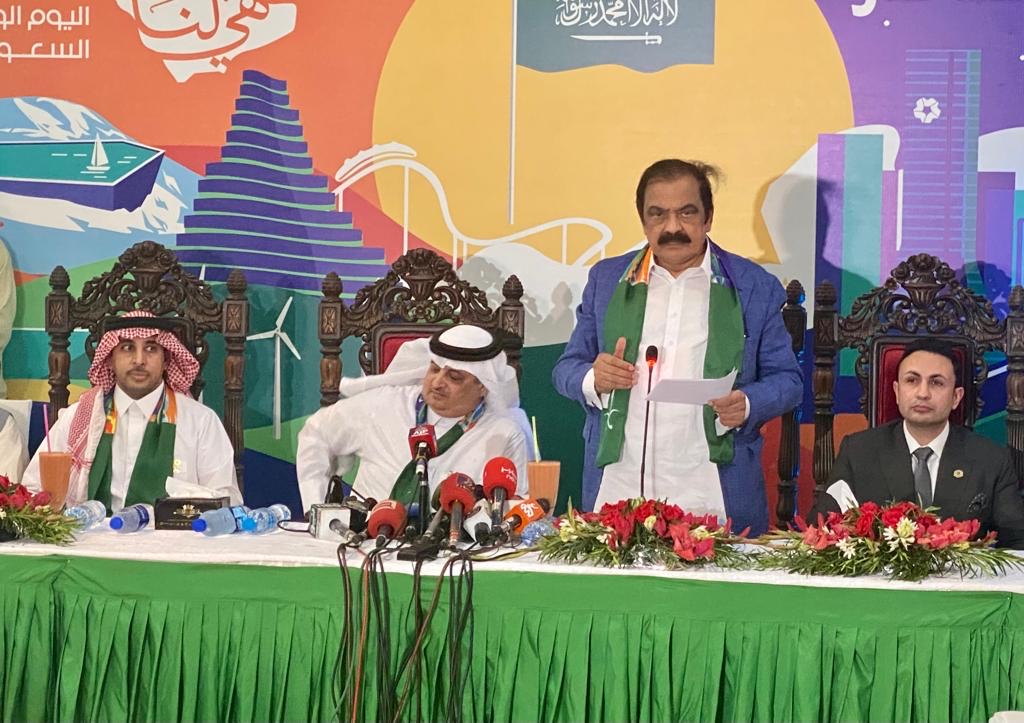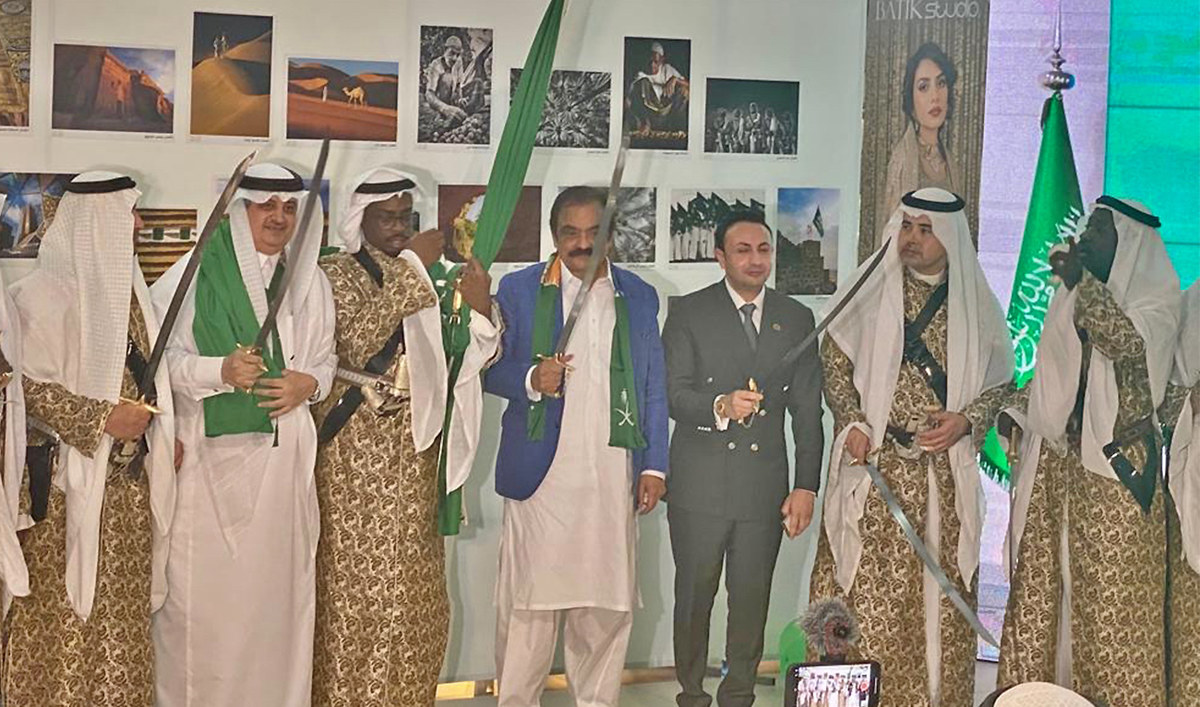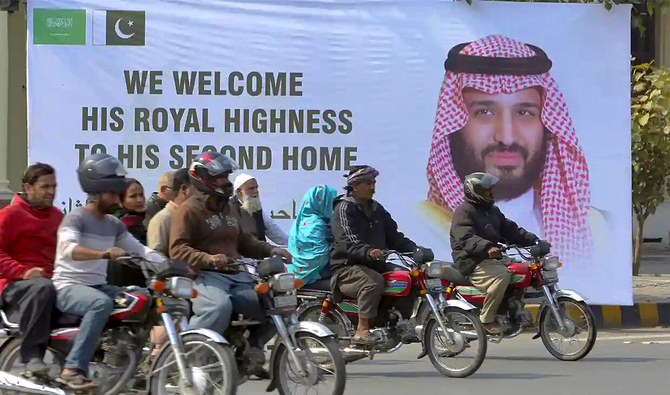ISLAMABAD: Pakistan’s interior minister Rana Sanaullah announced on Wednesday Saudi Crown Prince Mohammed bin Salman would arrive in Pakistan on an official visit in November, adding the whole nation was eagerly waiting for his visit.
The minister issued the statement while addressing a ceremony arranged by the Saudi embassy to celebrate the kingdom’s 92nd National Day.
The event took place at the Centaurus Mall in Islamabad and was open to public. A group of Saudi artists performed the traditional sword dance which was applauded by the audience.
“We are waiting with love and affection for the day when Crown Prince Mohammed bin Salman will visit Pakistan,” said the interior minister. “He will come to Pakistan in November this year.”
“I would like to congratulate the Saudi ambassador to Pakistan, King Salman, Crown Prince Mohammed bin Salman and the kingdom’s people on their National Day from myself, our government, and Pakistani people,” he continued.

Pakistan’s interior minister Rana Sanaullah (2nd right) addresses a ceremony to celebrate the 92nd National Day of Saudi Arabia in Islamabad, Pakistan, on September 21, 2022. (AN Photo)
Sanaullah said Pakistan and Saudi Arabia were like two brothers who had always stood by each other in difficult times.
“The friendship between Pakistan and Saudi Arabia is an example for the whole world,” he added, “showing how relations between two Muslim countries should be.”
The minister praised Saudi Ambassador Nawaf bin Said Al-Malki for his services, calling him a great friend of Pakistan while saying the friendship between the two nations had touched new heights since his appointment in Islamabad.
“Saudi Arabia is a holy land for the whole Pakistani nation due to the Two Holy Mosques, and we love their leadership and their people as well,” Sanaullah said while pointing out that Saudi Arabia annually hosts thousands of Pakistanis during the Hajj season.
“Above two million Pakistanis are working in Saudi Arabia and sending huge amounts of remittances to their country which play a big role in stabilizing our economy,” he added.
The minister said the Saudi envoy had assured him during a recent meeting he would do his best to solve the problems faced by the Pakistani expatriates in the kingdom and further help increase their number in the foreseeable future.
“Al-Malki is also playing an important role in the expansion of the Makkah Route project next year which will further ease Hajj travel for Pakistani pilgrims,” he continued.
Sanaullah said his ministry was working in close coordination with the Saudi embassy to complete all requirements for the expansion of the initiative.

Pakistan’s interior minister Rana Sanaullah (4th left) performs traditional sword dance in a ceremony to celebrate the 92nd National Day of Saudi Arabia in Islamabad, Pakistan, on September 21, 2022. (AN Photo)
The Saudi envoy thanked the minister for extending best wishes on the kingdom’s National Day and prayed for Pakistan’s prosperity and success.
“I appreciate and thank you, minister for interior, for gracing this event to celebrate the Saudi National Day, and I hope and pray for the prosperity and security of Pakistan,” he said.
Al-Malki agreed the two countries enjoyed warm relations grounded in their historical and religious linkages.



















